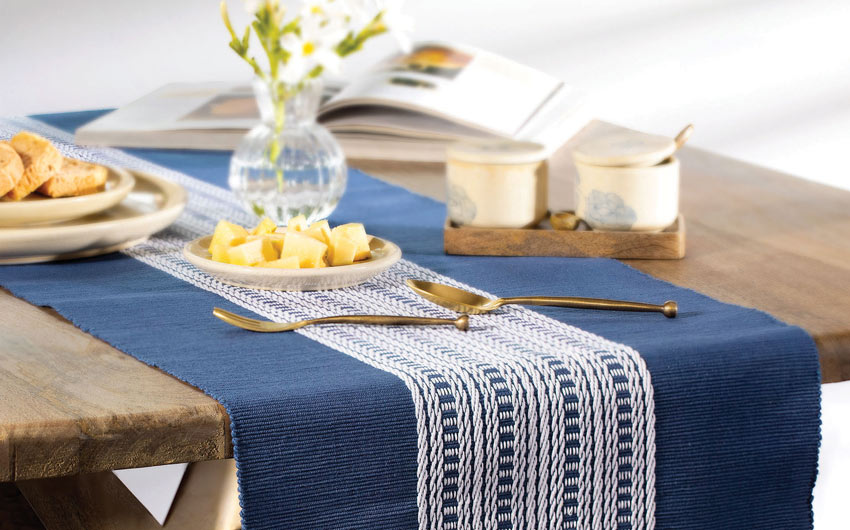Bed Linen Textile Developments: Discovering Modern Trends and Creative Applications in Layout and Fabric Sector
From lasting manufacturing methods to advanced weaving technologies, the advancement of bed linen is improving the landscape of the fabric industry. As we dig into the worlds of innovative layout applications and the introduction of bed linen blends and hybrid materials, a brand-new phase unfolds in which linen's function in future textile technologies takes center phase.
Lasting Practices in Linen Manufacturing
Lasting practices in bed linen production have become increasingly vital in the textile industry's efforts to reduce ecological effect and advertise honest sourcing techniques. Linen, an all-natural fiber originated from the flax plant, uses a variety of benefits such as breathability, biodegradability, and resilience. Nevertheless, standard methods of bed linen production can involve substantial water usage, pesticide usage, and energy-intensive procedures.
To deal with these challenges, many textile producers are taking on sustainable methods throughout the linen production process. This includes sourcing flax from organic ranches that stay clear of unsafe pesticides and chemicals, executing water-efficient retting strategies to remove fibers from the flax stalks, and utilizing eco-friendly dyes and surfaces. Furthermore, some firms are investing in sustainable energy resources to power their production facilities and lowering waste through recycling and upcycling campaigns.
Technological Developments in Linen Weaving
With the expanding focus on lasting techniques in linen manufacturing, the textile industry is currently witnessing a surge in technical advancements specifically intended at changing the art of bed linen weaving. These advancements are reshaping the way linen fabrics are created, supplying enhanced effectiveness, high quality, and imagination in weaving strategies.
One of the key technological developments in bed linen weaving is the combination of electronic looms. These sophisticated looms are furnished with software that permits elaborate and intricate designs to be woven with accuracy. By digitizing the weaving process, suppliers can achieve better consistency and accuracy in their linen materials.
Furthermore, improvements in yarn spinning innovation have enabled the manufacturing of finer and more long lasting bed linen yarns - table cloths. This leads to softer and smoother bed linen fabrics that preserve their top quality even after numerous uses and washes
Furthermore, the development of green dyeing processes and coatings for bed linen materials is obtaining grip. These lasting practices not just minimize the environmental effect yet likewise satisfy the raising customer demand for fairly generated fabrics.
Creative Layout Applications for Bed Linen
Innovative creative strategies are significantly shaping the imaginative style applications for linen in the fabric industry. Developers are pressing the boundaries of conventional linen usage, discovering its convenience in numerous applications. One noticeable trend is the integration of bed linen in lasting style lines, where its eco-friendly residential properties are highlighted. Linen's natural aesthetic allure and capability to blend with other textiles make it a favored selection for developing distinct garments and devices that accommodate the ecologically aware customer.
In addition, developers are trying out bed linen in home decoration, utilizing its sturdy and breathable nature to craft fashionable home furnishings such as drapes, bedding, and upholstery. The texture and drape of linen bring a sense of class and convenience to indoor spaces, including a touch of sophistication to contemporary homes.

Bed Linen Blends and Crossbreed Fabrics

Crossbreed materials, on the other hand, take the concept of blending an action better by including extra components such as metal threads, recycled materials, or conductive fibers. These innovative fabrics not only helpful hints broaden the style opportunities but likewise present useful aspects like conductivity, antimicrobial residential properties, or boosted resilience. Hybrid materials are progressively being made use of in different industries, consisting of style, interior decoration, and technological textiles, where the need for multifunctional products gets on the surge.
Linen's Role in Future Fabric Innovations

In the realm of future fabric advancements, bed linen is expected to be a principal in the development of sophisticated useful materials. Scientists and developers are exploring means to improve linen's integral high qualities through technological improvements, such as incorporating smart fabrics, nanotechnology, and performance finishes. These advancements intend to raise linen's efficiency qualities, making it appropriate for a broader range of applications, from activewear to protective clothing.
Additionally, the combination of linen with other natural or artificial fibers opens limitless possibilities for developing novel fabrics with one-of-a-kind homes and capabilities. By leveraging bed linen's features and exploring cutting-edge blends, the textile sector is poised to present exciting advancements that deal with developing consumer needs and sustainability demands.
Final Thought
In verdict, the expedition of sustainable methods, technological advancements, innovative layout applications, linen blends, and its duty in future textile technologies highlight the constant evolution of linen fabric in the contemporary design and fabric market. With webpage a concentrate on innovation and imagination, the versatility and green nature of linen make it a valuable product for designers and suppliers alike, leading the way for more growths and improvements in the area of textiles.
As we dive right into the worlds of innovative layout applications and the development of linen blends and hybrid textiles, a brand-new phase unravels in which bed linen's role in future fabric developments takes center phase.
Exploring the combination of linen with various other textiles has actually led to the introduction of innovative blends and hybrid textiles in the contemporary textile industry. Bed linen blends offer a distinct mix of the attributes of bed linen with those of other fibers, resulting in textiles that possess improved residential or commercial properties such as increased toughness, enhanced draping, and decreased wrinkling.The development of bed linen blends and hybrid materials has established the stage for Linen to play a pivotal function in driving future fabric advancements.In the realm of future textile technologies, linen is anticipated to be an essential player in the development of advanced useful materials.